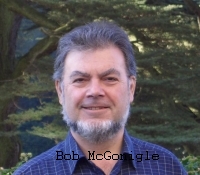- Stewart Harris (CEO, sportscotland) did the introduction (and will speak further tomorrow). I detected that he thought that sportscotland would continue to exist though its focus and remit would change. Otherwise, he did not say much else, as this was just the opening.
- Keith Brown replaced the minister, Stewart Maxwell, who was ill. He spoke of the need to think about legacy for events, the balance between elite & grass roots, the need to keep driving that sports should be recognized as contributors to nation and community development, concern that the new PPP school estate is not being fully utilized by the community, and concerns about inequality in Council spend on sport (£36-£166 per capita). No real new messages there.
- Dr Pat Duffy, CEO sport coach UK, was most inspiring. He spoke of the challenges of being participant focused, maximizing front line delivery and defining the coaching model, all of which forms the basis for the UKCC. He then went on to speak about new thinking around classifying coaching by age range (child, juvenile, adult) and by type (from community to master) and for sports to build that into their planning. He spoke of a move for coaching to be professionally regulated, embedded into policy and for coaching to recognize that it needed to work with other professionals (officials, administrators, planners, physiologists etc) to make a real difference. Coaching can’t make UK Sport great on its own, was his words. He added that his estimate would be that 40,000 coach (FTE equivalents) being in place by 2016.
- Nolette Rennie OBE, CEO Sporting Equals, talked about her work in addressing the racial part of equity and the government’s desire to decrease under representation (race, disability, female) by 1% per annum to 2012. She has funding of £2M invested in English projects as early adopter programs to provide evidence and case studies. She added that, in race, you will be successful if you reach out and engage with existing race community groups, understand their barriers, and work with them for solutions.
- The workshop on the culture of clubs was interesting. Amongst all the delegates, everyone had their head round the issues. The SFA presented on their Quality Mark scheme (in content like many others) and I noted that: they link their levels to equity (e.g. bringing in females); they support well through their development officers, run urban workshops, and have web/telephone solutions for rural; they incentivise through discount on coach education, priority booking for conferences, automatically endorse funding applications, provide free first aid & child protection training, and advertise on their web site. A major issue in the PPP contracts and the difficulty in access to the school estate. Another major issue is the lack on joining up, at a local level, Active School co-ordinators, Council sport development officers and NGB clubs – the SFA took several months to complete a mapping exercise in the Lothians that identified facilities, who used them and where the local clubs were. They interestingly utilize the EC’s Leonardo fund to arrange transnational visits between clubs here and on the continent.
Second day highlights:
- The day started with Dr Mark Nesti of York St John University talking about the application of existentialist psychology to sport. A good speaker to start a second day off after a heavy conference dinner. In a nutshell, he said that there is too much of a focus on process in sport (though process is important) and that athletes/coaches with skill/techniques and no personality will fail (as personality gives core values and strength). He invited the audience to contact such individuals in their organizations and suggest the move to roles more suited to their capabilities and where they can develop their personalities.
- I attend a coaching CPD workshop around the introduction of the UKCC into Scotland which was surprisingly different from what I thought it would be. There has been quite a bit of tartanising linked to funding that includes creation of SQA units, becoming an SQA centres and being externally moderated by the SQA. Most of this is supported though. I’ve written separately to Bill Mackay and Ollie on this.
- After lunch there were some short presentations and I attended the one on Scottish University Sport. It appeared to me that these guys (and the UK equivalent) were getting their act together in increasing sporting participation and outreach to communities.
- The afternoon sessions started with Derek Casey talking about how Glasgow won 2014, very inspiring. I had no idea how much effort they put in: visited 67 out of 71 commonwealth countries; had as many visit Glasgow; had 1.5M Scots pledge support for the bid; utilize 70% of existing venues and only build 30% new. He reminded us all that 2014 will not only have a profound effect on sport in Scotland but will also hugely impact and strengthen our communities.
- The afternoon ended with Stewart Harris, CEO of sportscotland, reflecting on the conference and noting that can do attitude, clear responsibilities and collective energy are all success factors. Issues still remain around club facilities and we need to do more to employ & deploy coaches effectively and raise professional standards. He closed with thank us all and reminding that sometimes we forget to thank volunteers enough.
The week ended with shooting with Penicuik on Friday night and good chat and then at Montrose for the indoor. I saw Sandy Gregory (who incidentally is on one of the photos in the sportscotland boadroom, in his pre-white hair days) who was shooting both morning and afternoon, I think - none of this part-time stuff for the boys in the wheelchairs.
